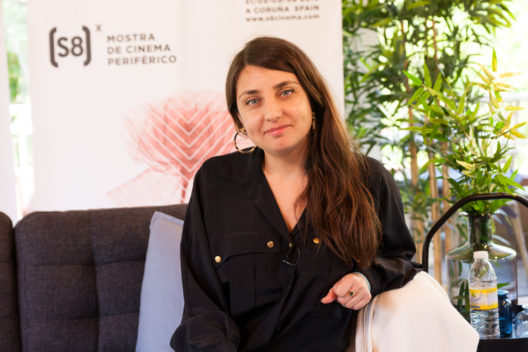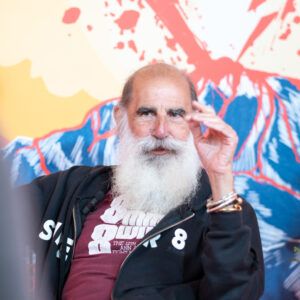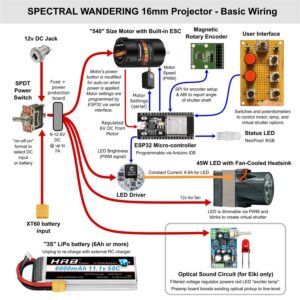
You started out as a photographer, but at some point in your career you took an interest in moving image. What does it mean for you, what have you found appealing in the field of cinema?
Well, that’s actually something I keep asking myself, what is that I find most interesting in introducing the element of time in my work. I guess it’s mainly that exploration: my work has to do with the nature of reality, especially the nature of time –that’s something that’s always present in my work. I guess that introducing duration, time, was something… natural. Also, one of the reasons that led me there was that I started discovering the works by a number of filmmakers that I didn’t know before. I always name the same ones, but… Peter Hutton, for example. Becoming interested in a specific type of cinema inspired me to try to create something in that direction, to generate experiences from other perspectives, other angles. But I don’t really have a defined answer to that.
Landscape plays a major role in your work. Actually, your program here at the (S8) is called Landscape and beyond. Could you talk a little bit about your treatment of landscape at what is that interests you about nature?
I’m very interested in landscape, first of all, because I grew with it since I was very young. I grew up in a rural area, and I think that the intimate dialogue I always had with landscape made it become like a necessity to me: contemplating it, spending lots of hours feeling it, it’s something that’s become part of my life. Landscape has to do with my particular vision, but… I think it has to do with that quality of landscape that you can’t own it, you can’t quantify it –it’s a gap in everyday logic. Opposing those very Western intentions to master, to preserve, to understand, to limit reality… landscape escapes all that, it’s impossible to control. And I guess that this inscrutability, this impenetrability of landscape is what attracts me. It’s an element on which I can project all those questions that have to do with the invisible part of reality, all those things that escape consensual reality, compulsory reality, that escape the codes that we learn and master. Landscape is an element onto which I can project all these interests.
The program dedicated to your work here at (S8) also includes pieces where you approach all kinds of subjects. I’m thinking about Listen to Me, or Sibila. Could you say something about these two films?
Yes, those are films that were born in very particular contexts, they were almost commissioned works. They didn’t come out of me spontaneously… I mean, they did, but not in the first place. First I had to put myself in the conditions to make those films. They’re very different because they have fictional elements. They’re the only works where I have introduced this kind of elements, and also they have more characters than usual, women… Even from an aesthetic point of view, I use the camera in a different way. But the exploration is the same: what I look for is to create new codes, new syntaxes of reality, a personal language, a personal voice that comes from me. I think that this interest in escaping this compulsory reality, the codes that we master, that we’re forced to master in order to master the codes of the power devices…. This exploration is a way to escape and… it leads me to a sort of idealism that, in the end, is my own subjective experience of reality. The most honest thing I can do is to absorb reality and use my intuition to give it back to the world, or whatever it is, and that comes back to me again… and the process is repeated over and over again. In the end, it’s a way of creating a persona language, a different language… not different from real language, but a different language, of a different world.
You are familiar with both the space of art galleries and that of projected film shows. Which one do you prefer? Which one fits your work better? Maybe it depends on the specific work. What are your thoughts on this?
I currently feel more comfortable working with spaces, and not just making work that are meant to only be projected on a screen. I like when there are more factors involved, and that they’re necessary for that work to exist. I guess it’s also due to that interest in looking for new ways of perceiving, understanding, new ways of programming reality and reprogramming it… I feel comfortable conceptualizing space and creating works where there are no rules, where everything mingles together: audiovisual techniques, still images, objects, light… That whole is what the work really is. I’m also interested in that aura that emerges when the work has to be seen in that specific place, with that unicity.
(S8) is the name of this festival, and it has a passion for analogue supports. You’ve used super 8 in many occasions. What do you find in analogue materials?
To me, analogue supports are but another language, just like digital ones… I’ve always rejected this opposition between them, people who make you choose one or the other. I don’t think there’s a need to choose, each one of them is a different language. There are several aspects of analogue that I like, starting with the moment of filming… I mean, my body… In the end, that subjectivity is something that comes from the body. My body changes when I film in analogue, maybe the moment has more weight, it becomes a solemn thing. But the thing is that I film differently than when I film in digital and my perspective is more… technological, more objective. My body changes with the support, and so do the results, of course. I’m interested in that alchemical character of analogue film, there’s something almost magical to it, which belongs to what’s called the astral plane of reality. I’m interested in that matter, in the deviations produced by film. They’re different materials to work with, and I have no preference for one or the other. I also like to experiment mixing them in order to see what happens. Filming in analogue but working with it digitally, for example. Now I’m testing VR techniques in combination with 16mm film. I like mixing everything together, or showing analogue works on tablets, on devise that usually aren’t used to show this kind of works.





